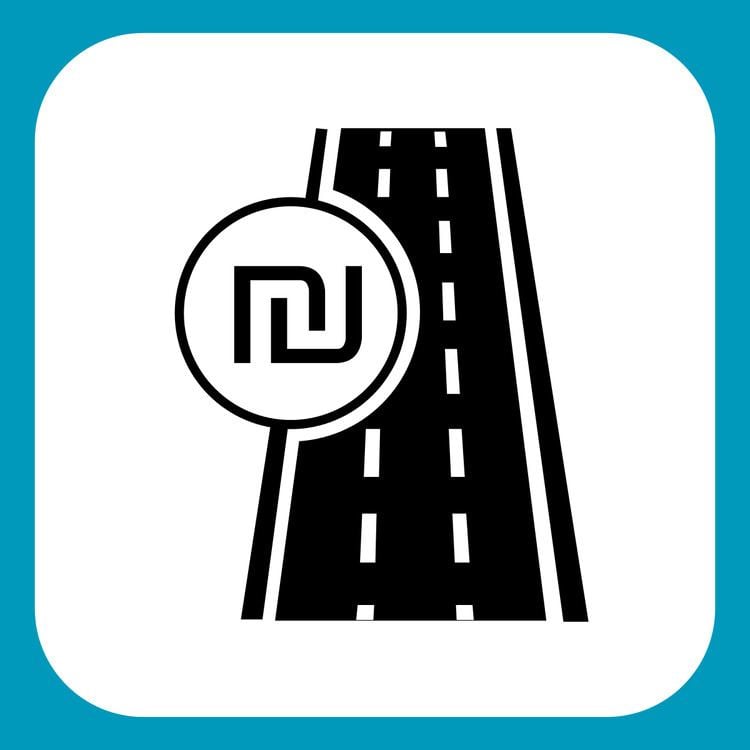Length 175 km | ||
 | ||
South end: Shoket (Shoket Interchange) North end: Ein Tut Interchange (Milek stream) Major cities | ||
Highway 6 (Hebrew: כביש 6, Kvish Shesh), a.k.a. the Trans-Israel Highway or Cross-Israel Highway (Hebrew: כביש חוצה ישראל, Kvish Ḥotzeh Yisra'el), is a major electronic toll highway in Israel. Highway 6 is the first Israeli Build-Operate-Transfer road constructed, carried out mainly by the private sector in return for a concession to collect tolls on the highway for a given number of years. It is also one of the largest infrastructure projects undertaken in Israel.
Contents
- Map of 6 Israel
- History
- Goals
- Characteristics and pricing
- Free segments
- Financial statistics
- Interchanges
- References
Map of 6, Israel
History
The highway was officially dedicated as the Yitzhak Rabin Highway (Hebrew: כביש יצחק רבין, Kvish Yitzḥak Rabin), though this name is not commonly used. It started operating in the early 2000s and is being lengthened as construction proceeds on newer sections. The northern terminus was extended to the Ein Tut Interchange on July 20, 2009 where the highway now merges into Highway 70 heading northwards.
Goals
The aim of the Highway is to provide an efficient north-south transportation corridor in the country while allowing drivers to bypass the traffic-congested Tel Aviv region, located in the center of the country. Thus it is the Eastern-most major highway in Israel, in some places located almost right on the Green Line. Currently the highway is 167 km long, all of which is a freeway. This figure will grow in the next few years as additional segments are extended both northward and southward from the existing section of the road. As of 2013 some segments were under construction while others were undergoing statutory approvals and permitting processes.
Characteristics and pricing
Highway 6 uses a system of cameras and transponders to toll vehicles automatically. There are no toll booths, allowing it to operate as a normal freeway with interchanges. A radio antenna detects when a vehicle with a transponder has entered and exited the highway, calculating the toll rate. For vehicles without a transponder, an automatic license plate recognition system is used. Monthly statements are mailed to users. Highway 6 is based on the technology of the Highway 407 in Ontario, Canada developed by Raytheon.
The pricing scheme is based on the number of segments a driver passes in a given trip. Each segment is the road span between two interchanges. As of April 2010, the pricing for up to 3 segments was 17.79 NIS, 21.39 for 4 segments, and 24.99 for 5 or more segments. An additional fee is paid when driving through the "northern" segment, the cost of which is additional 4.67. Pricing for motorcycles and heavy vehicles such as trucks is different.
The price above is for drivers who register with Highway 6's operator and install the in-vehicle transponder unit (called a "Passkal", lit. "easy-pass") to record their highway usage. When a vehicle does not have a transponder, its license plate is scanned and the vehicle identified. Drivers who pre-register their license plate with the operator and establish a direct billing relationship receive a discounted rate (though they pay more than those who have installed a "Passkal"). If a license plate is not located in Highway 6's database, the bill is sent to the owner of the vehicle according to the car registration with the Israeli Ministry of Transportation. Such a vehicle pays the highest rate.
The licensed road operator, Derech Eretz, operates a fleet of service vehicles that patrol the entire length of the highway and assist drivers in need. Since it is technically a private road, the road operator is required to pay the Israel police for traffic enforcement.
Free segments
All the existing (and planned) segments of Highway 6 south of Sorek interchange are free in both directions, as is the segment between Ben Shemen and Daniel interchanges, where Highway 6 merges with Highway 1.
Financial statistics
In March 2006, Derech Eretz reported a profit of 89 million NIS for 2005, an increase of 56% from 2004, on income of 779 million NIS, an increase of 137% from 2004.
At the end of 2005:
Interchanges
The highway's kilometer count starts at 30, since it includes the planned southern extensions.
